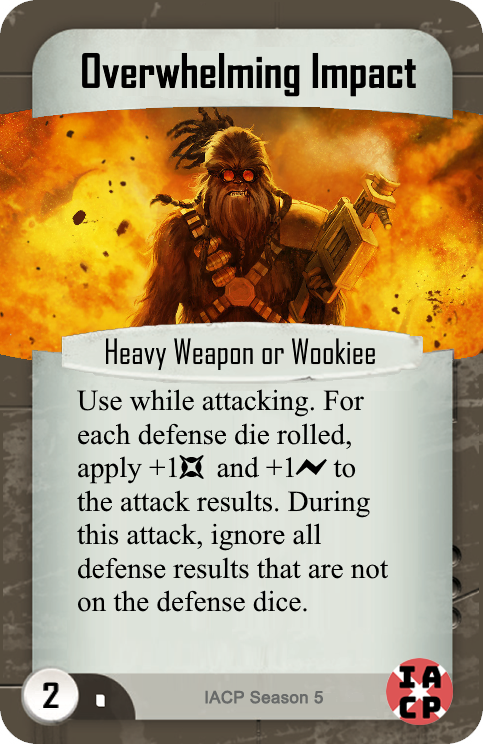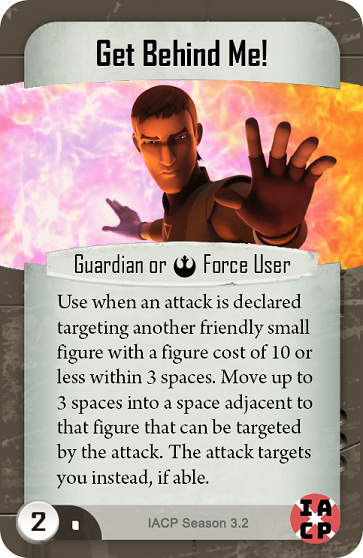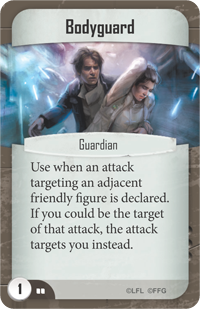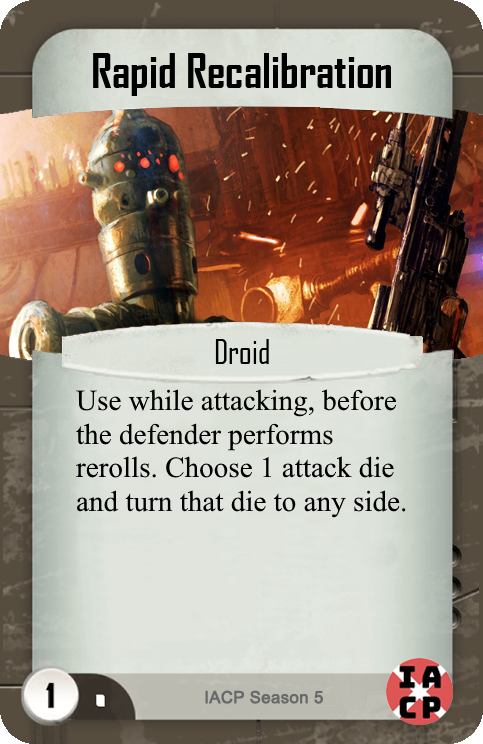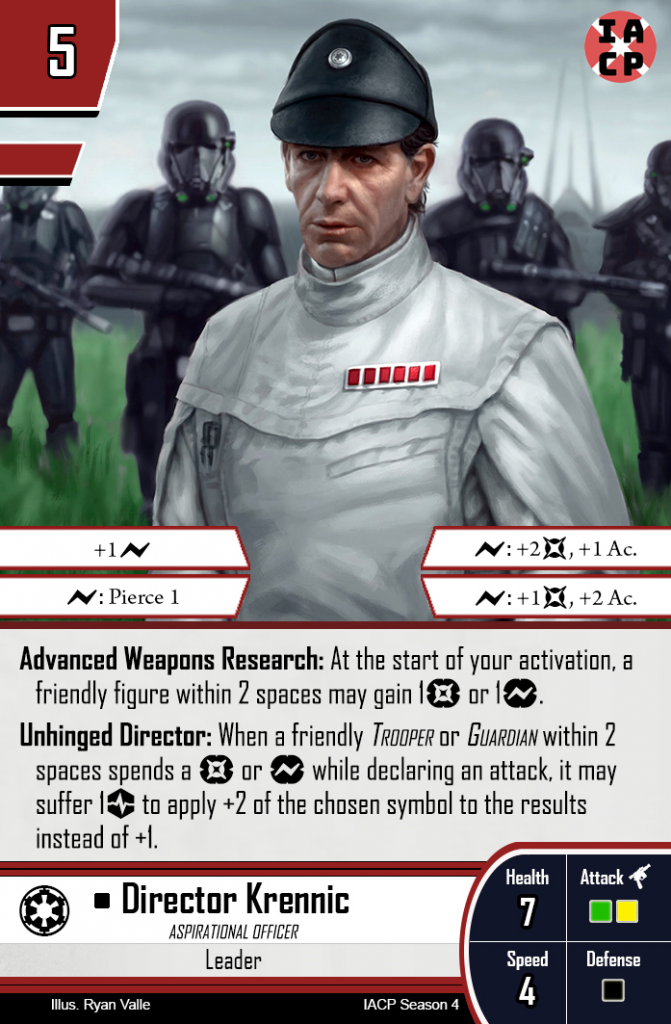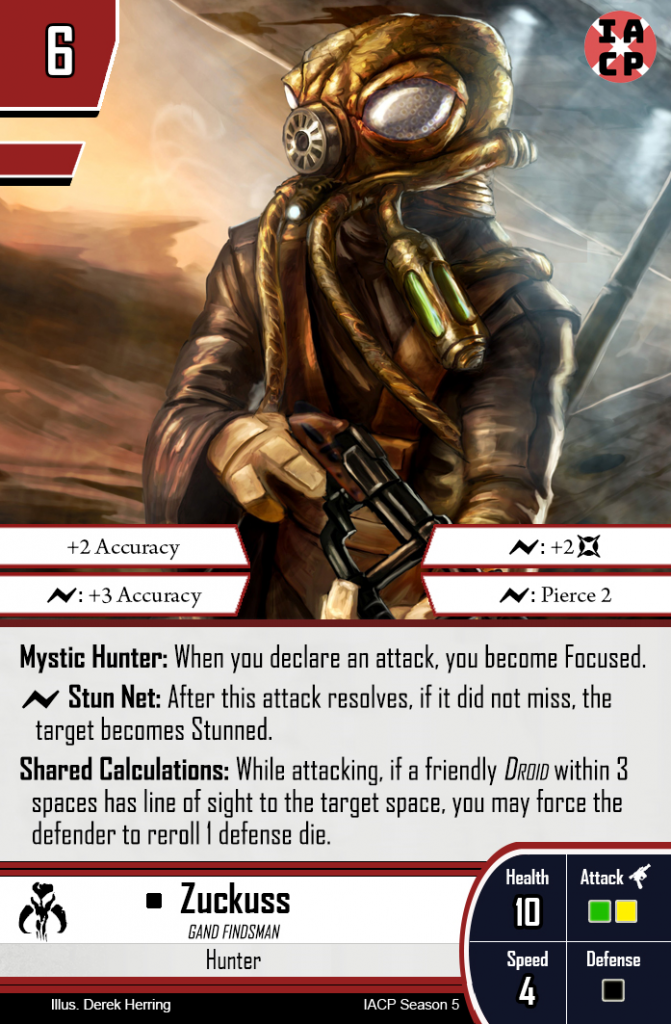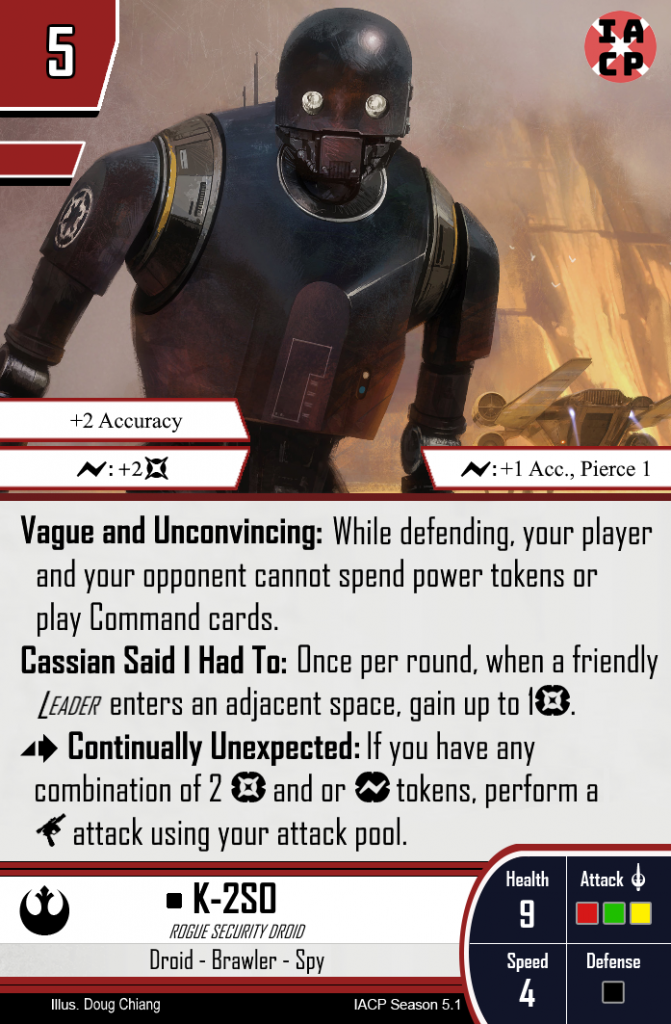Disclaimer: This is an article series where I share my personal thoughts about designing cards for Imperial Assault. As one member of an IACP Steering Committee of 7 (yes I’m officially back on the committee), these articles will share some insight into my personal reasoning and preferences as a designer and player, but should not be taken as the opinion or position of the entire Steering Committee, and also my own opinions will naturally grow and evolve so something I expressed in one of these articles may change and grow over time.
Each Deployment Card in Imperial Assault skirmish has one or more traits printed on it, out of a possible 13. These traits have no inherent rules associated with them, but instead serve as tags or markers on a card that other cards and abilities can reference. For example, an ability might grant a special bonus only to figure with the Trooper trait, or a Command card might only be playable by figures with the Brawler trait.
Traits are an important balancing factor in skirmish that allows for more powerful effects to be restricted only to figures of a specific trait. This challenges and rewards players for building armies with multiple figures that have overlapping traits, rather than just including 40 points of the best figures available in their faction. This in turn leads to unique and distinguishable archetypes within each faction and increases list diversity within the metagame.
It’s easy to compare traits in Imperial Assault to tribal mechanics in other games where minions or creatures have different types for flavor purposes, but I actually think of it as functioning more like the color-pie mechanic from Magic: the Gathering in terms of how it helps keep the game balanced and diverse. In Magic, the different colors have specific strengths and weaknesses, and you have to include lands in your deck that match the color of your cards in order to be able to play them. The more colors you try to include in your deck to cover your deck’s weaknesses, the less likely you are to have the right color of land you need when you need it to play all of your cards. This helps to prevent players from just cramming the strongest cards in the game all into one deck, and rewards players for specializing their deck’s strengths and leaving certain weaknesses. Some might say that Imperial Assault’s 3 faction identities are meant to serve this role, but to me the faction identities are actually secondary to traits because of how much faction mixing is allowed by cards like Temporary Alliance, Saska and Jawa Scavengers. Faction identity is still important though, but a topic for another article.
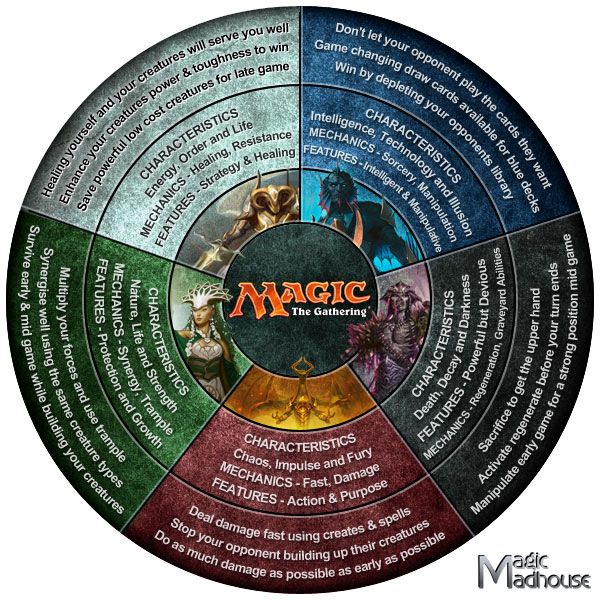
In IA, I see the figures as the lands that allow you to play your cards that match that figure’s trait/color. But in Imperial Assault, instead of needing to draw the right lands randomly from your deck and adding more lands to your pool of resources as the game plays on, you start with a set number in play and they get removed (by getting defeated) as the game plays out. The more figures you include of a certain trait in your list, the more consistently you’ll have figures of that trait still alive to be able to play the Command cards of that trait when you draw them later in the game. If you try to include the strongest command cards from too many different traits in your list without being able to include enough figures of each trait, you might find yourself drawing Command cards you can’t play because your only figures with that trait have already been defeated. Command cards that can be played by multiple traits like Tools for the Job are the equivalent of hybrid-color cards in Magic, and figures that have multiple traits to enable multiple types of Command cards to be used are the equivalent of multi-color lands in Magic, allowing you to play a greater diversity of Command cards in the same list.
Overwhelming Impact can be played in a list that runs either Wookiees or Heavy Weapons, much like how this Hybrid Mana spell can be run in any deck that has white or green mana, making it a very flexible card.
All that is to say, it’s important for each trait to also have established strengths and weaknesses so that no single trait is just good at too many things. There should be a trade-off in list-building between having only one or two traits in your list for a very consistent Command deck, versus having a variety of different strong cards in your deck at the cost of not always being able to play them when you draw them. When designing Command cards for a trait, we want to try to identify what that trait is good at and design within those parameters, and then equally importantly identify the weaknesses of that trait and make sure we’re not making that trait too powerful by giving it an effect that eliminates a major weaknesses or shortcoming that should be covered by including other traits in the list.
Traits can be good at a variety of things, but ideally should focus on just a couple, and shouldn’t be good at everything. Here’s an example of some of the things traits might be good or bad at, along with the traits listed that have an established Command card within that niche.
- Offense (Hunters, Smugglers, Brawlers, Heavy Weapons, Troopers, Wookiees, Droids, Creatures
- Defense (Smugglers, Wookiees, Force Users, Vehicles, Guardians, Creatures, Brawlers)
- Movement/Positioning (Troopers, Force Users, Brawlers, Vehicles, Leaders, Droids, Creatures, Spies)
- Dice Manipulation (Force Users, Droids, Hunters, Brawlers, Leaders)
- Supporting Others (Droids, Guardians, Leaders, Vehicles, Spies)
- Card Draw (Smugglers, Leaders)
- Hand Disruption (Spies)
- Strain (Hunters)
- VP Manipulation (Hunters, Smugglers)
- Area of Effect damage (Heavy Weapons, Troopers, Vehicles, Brawlers)
A good example of this would be the Hunter trait. Because Hunters have such strong offense as their primary strength, with VP manipulation as a secondary, it would be very bad to ever give Hunters cards that also improve their defense or negate opponent’s Command cards. A Hunter list should need to go out of its way to include other traits to gain access to those types of effects, as should every trait in the game. Generally, each trait should have a set of things that it’s good at doing, and thing or set of things that it can’t do so that no single trait can have access to every kind of ability it would need from its Command cards in a game. This also makes each trait feel different and unique from the other traits, which helps to add texture to the skirmish list-building landscape.
Three Ways to Design Abilities for Traits
I’ve identified three different ways that we design new cards based around a trait. Keep in mind, these are not necessarily the only way to design effects for traits, there are likely more ways or finer subcategories of design, but this is my observation based on the design work I’ve done for the IACP when working with the Steering Committee on designing new cards for specific traits.
1. Reinforcing a Trait’s Existing Mechanics
The first is to reinforce or reiterate existing abilities already available to that trait. A good example would be the card Get Behind Me, a Guardian card that is basically a much better version of an already existing Guardian card, Bodyguard. This card doesn’t break much new ground design wise, but thanks to letting the figure using it move 3 spaces before using the main effect, it’s much more flexible and therefore a lot more viable in competitive play than Bodyguard is, though that card actually started to see a resurgence in play once people realized how strong the effect of Get Behind Me actually was.
This is a good option for when a trait has a pretty well established mechanical identity from previous expansions, but the cards that use those mechanics are competitively very weak and thus don’t see play. Though more recently the Steering Committee has been more willing to update old Command cards to help them see competitive play rather than design a new card that does something similar.
2. Finding New Design Space that can be Thematically Linked to a Trait
The next way to design cards for traits is by mining new design space for that trait that both makes sense thematically and also synergizes well with things that trait already has going on. Iron Will is a good example of this. It fits thematically with Guardians as a trait, likely to have trained their bodies and minds to take a lot of punishment in order to protect those they protect. And it also synergizes well with the established mechanical identity for Guardians, which is that they are often the figures your opponent is either incentivized or forced to attack first before your other figures.
Another example I like from Season 5 is Rapid Recalibration. While we were brainstorming Command card effects to help make Droid lists more of a thing, I looked for abilities that were already in the game that might work with droids and noticed Ezra’s Much to Learn ability. While this is themed in Force Users through Ezra and Yoda’s command card as being tutored by a Jedi Mentor, I realized it would also work really well in the droid trait by representing the mechanical precision that Droids are capable of, while also not being able to expand outside of the bounds of their pre-existing programming, which makes changing a die’s results but not adding an extra die the perfect mechanical representation of that.
This is my personal favorite way to design new cards because it adds new experiences and play patterns to existing traits and make the game feel new and fresh again when they get played. It also avoids the issue of having abilities sometimes become too strong when you can effectively spam too many copies of the same effect in the same list.
3. Rewarding Full Trait Dedication – Force Multipliers
Finally there is the Force Multiplier design for rewarding trait spamming in a list. Basically any card that says for each figure with Trait X in your list, gain some reward that many times. These are cards like Kanan Jarrus, Director Krennic, Fury of Kashyyk, and Cavalry Charge. More than any other type of design, these types of effects want you to go as all in as possible on whatever trait they reward you for playing. These types of effects are often very exciting for the players that are big fans of that particular trait, but they can be dangerous if not balanced correctly, and they also sometimes feel too restrictive on list building and can stifle creativity and discourage trait mixing too much if not designed carefully. It’s important to build in some kind of limit on how much the card can reward you for spamming that trait, or some kind of equal cost for getting that reward, like the strain cost on Krennic.
4. Rewarding Mixed Traits
There is also a fourth type of trait design that IACP has done a little bit of that I’ve only recently noticed, and that we’ve learned has fans within the community, which is rewarding mixing of specific traits. Zuckuss does this by rewarding you for playing him in a list with Droids, and K-2SO does this by rewarding you for playing him in a list with Leaders. You also see this when we put an ability on a figure that synergizes very well with another specific existing figure and we give the new figure traits that don’t match the existing figure’s traits to create interesting list-building tension. The main example coming to mind being Jyn Erso’s Trust Goes Both Ways working very well with Rebel Saboteurs being surge hungry to trigger multiple Blast and Pierce abilities.
Traits and Deployment Card Abilities
One more thing I want to discuss here is the idea that a figure deployment card needs to have abilities that thematically or mechanically match that figure’s traits. It’s my personal opinion that while it’s great when a figure’s abilities synergize well with the mechanical identity of all of the Command cards in that figure’s traits, I personally don’t think that is absolutely necessary. The more important thing to me is that the abilities of a figure thematically match the character or unit that deployment card is representing from the source material, and that those abilities don’t undermine or contradict the established weaknesses of the factions it can be run in (likely a good topic for a future article when I feel like writing one).
Traits are added to a figure again based on that characters traits from the source material, not based on what kind of abilities that figure has. So if a figure is a spy in the source material, it should also have the spy trait, even if that figure’s abilities don’t fit into the established mechanical identity of Spies in Imperial Assault, which mostly focus on controlling Command cards.
Well that’s a little peek into how I view the amazing Traits and Command card system in Imperial Assault skirmish. I actually drafted this article way back in January 2021 but just got too busy to finish it and then found it in my drafts a few weeks ago and decided to finish it up and get it posted! I hope this maybe helps you see Traits and Command cards in a new light, and that more and more traits will get more support in IACP seasons to come.



